Foam
A product of a fine balance between components of a solution, the foam material is present around us in many forms and applications.
Soft and malleable, it adjusts to the objects with which it interacts and takes various complex shapes.
In this research, we examined the visual and structural complexity of foam and found new angles on this everyday material.
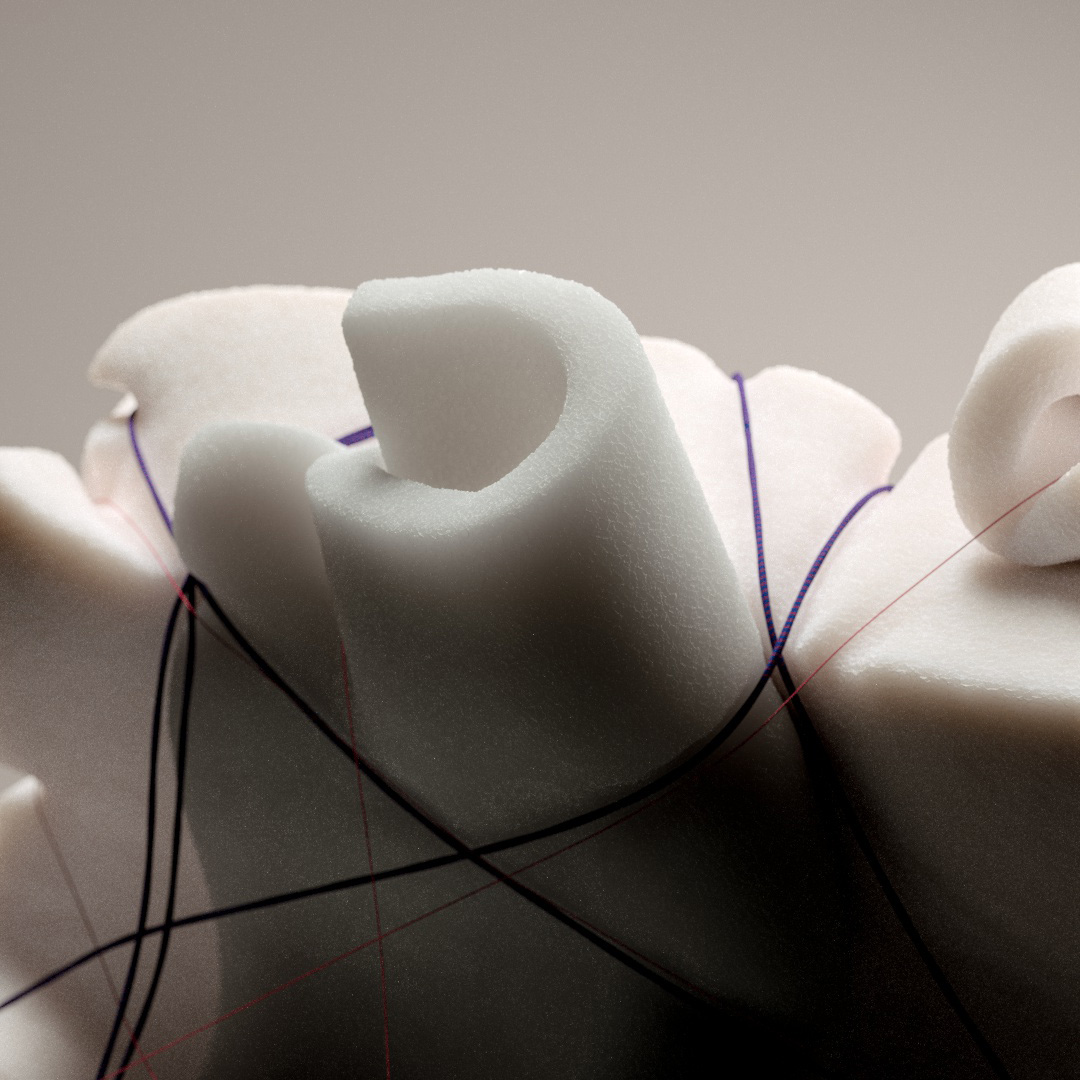
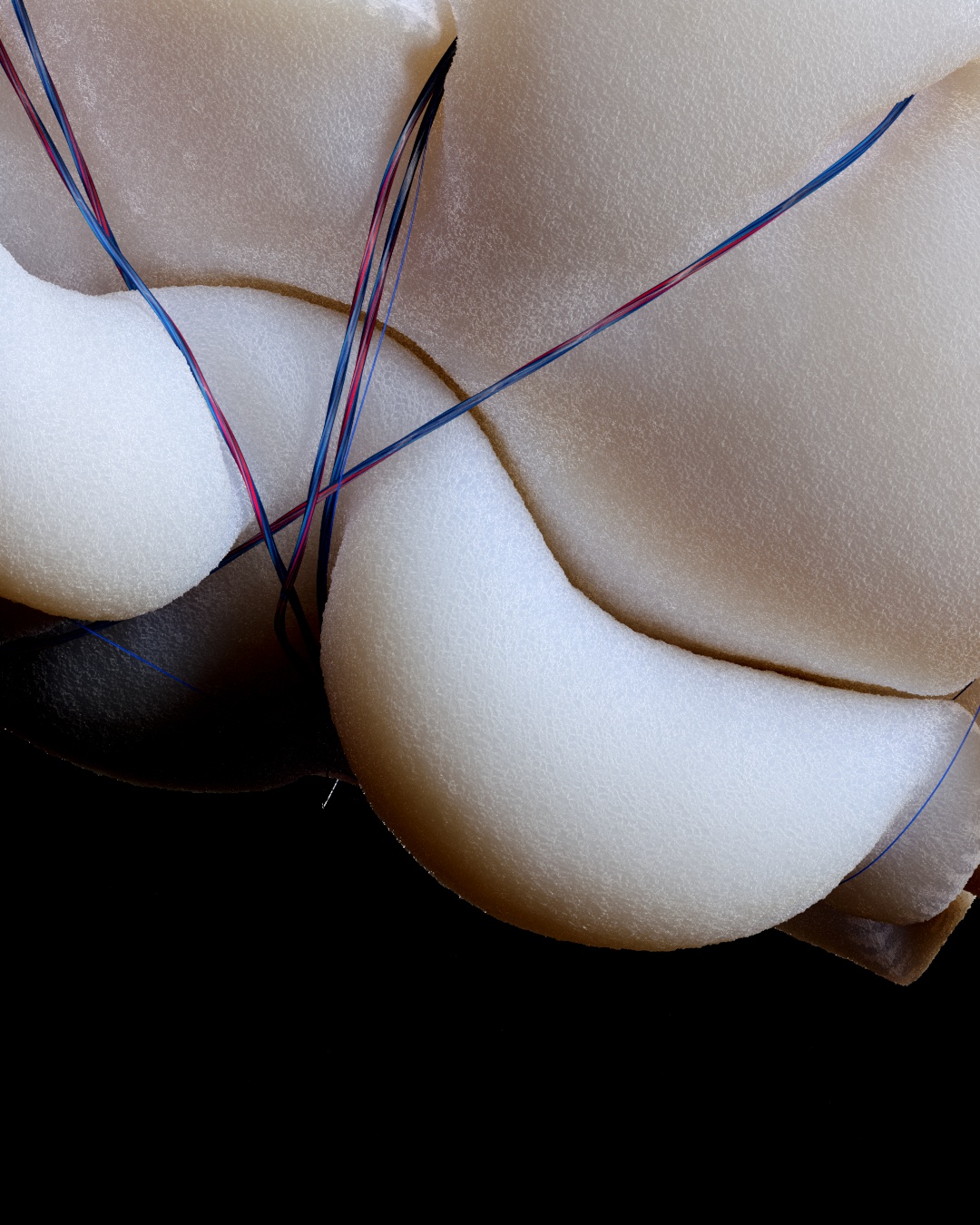
Production
Foam rubber is produced solely from liquid components. When substances are mixed, a large amount of gas is emitted, turning the mixture into foam.
The result of this reaction is a polymer that, with the help of stabilizers, can trap air bubbles due to its structure consisting of long molecules. This liquid foam is then solidified.
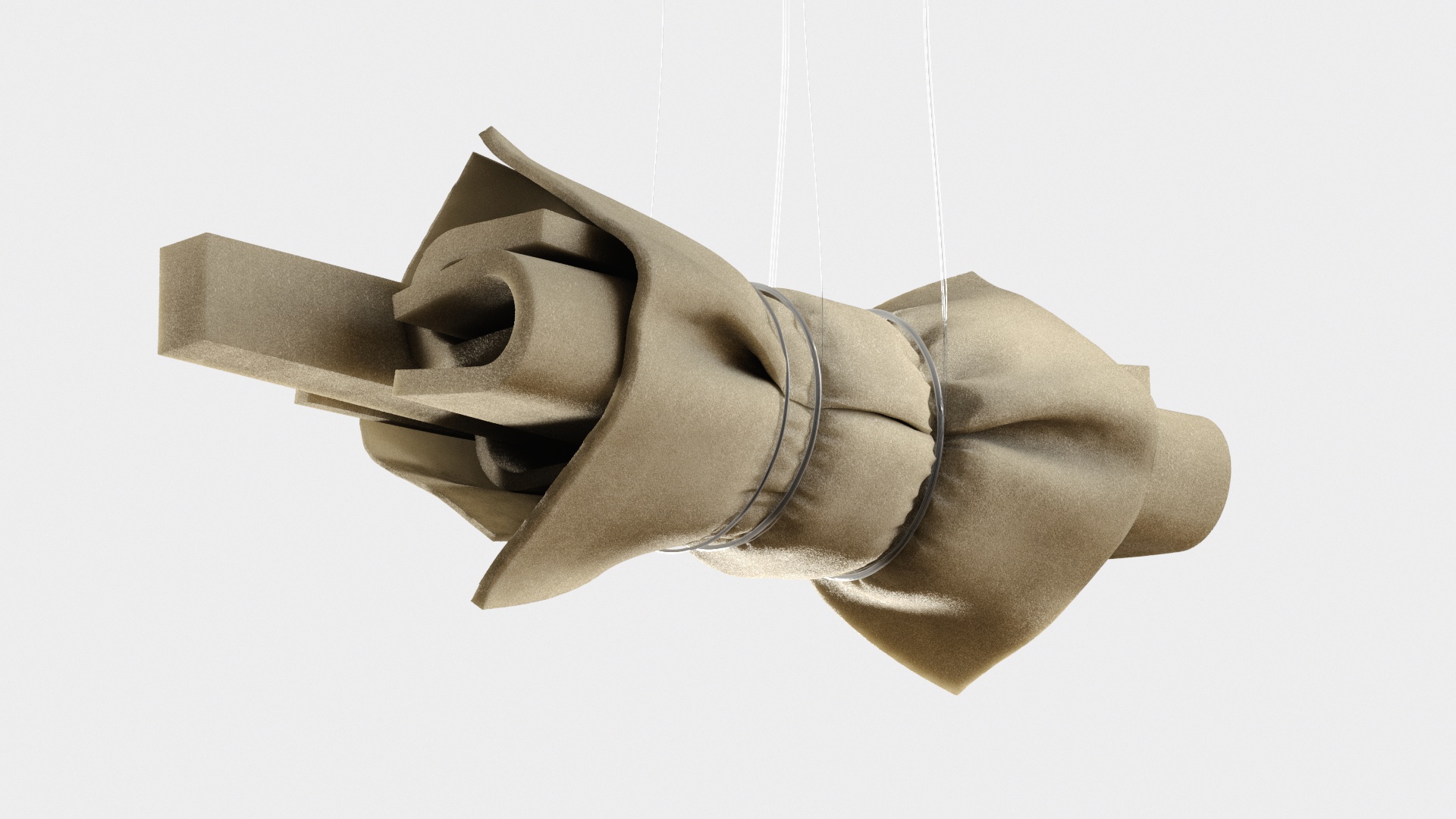
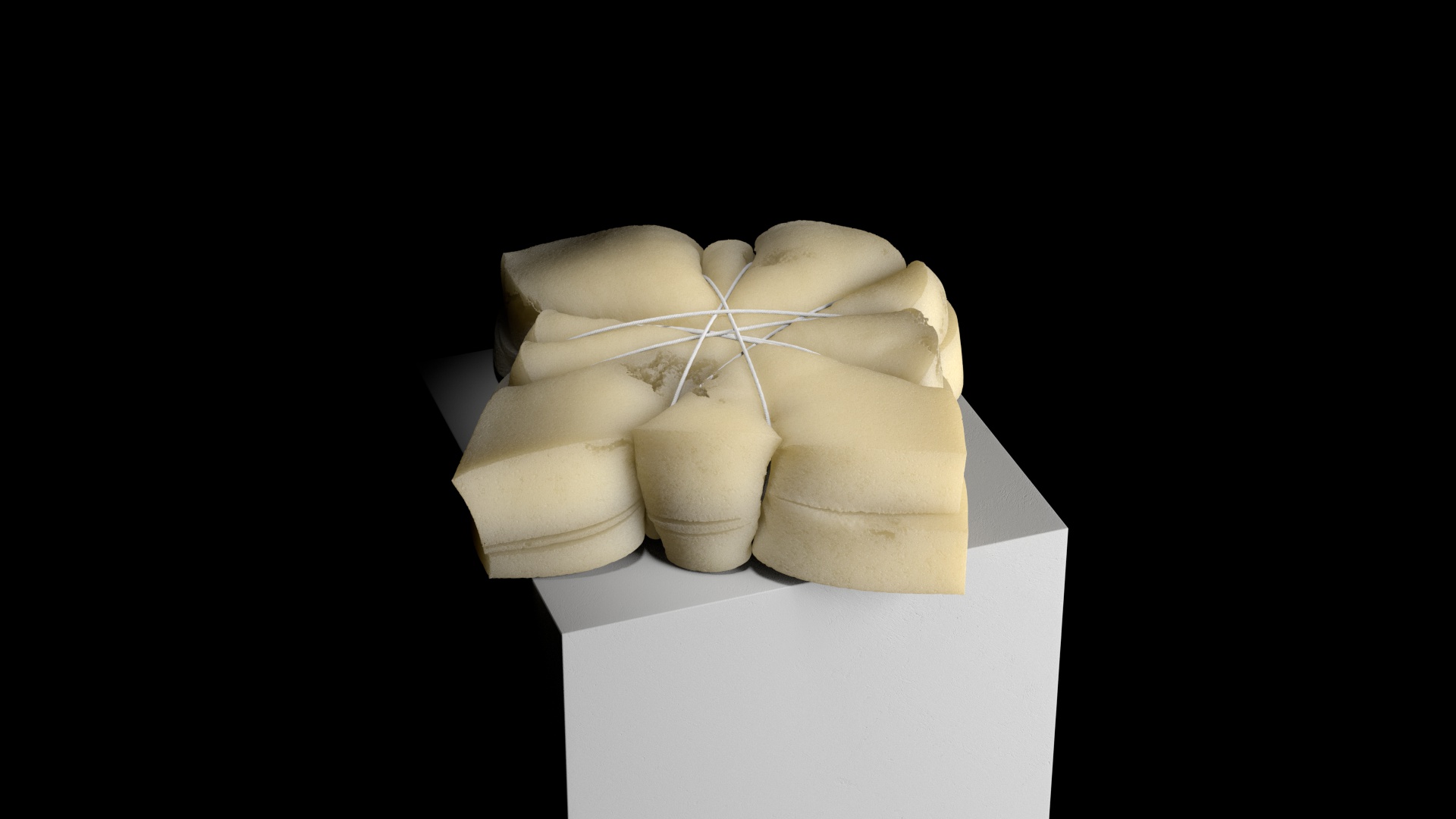
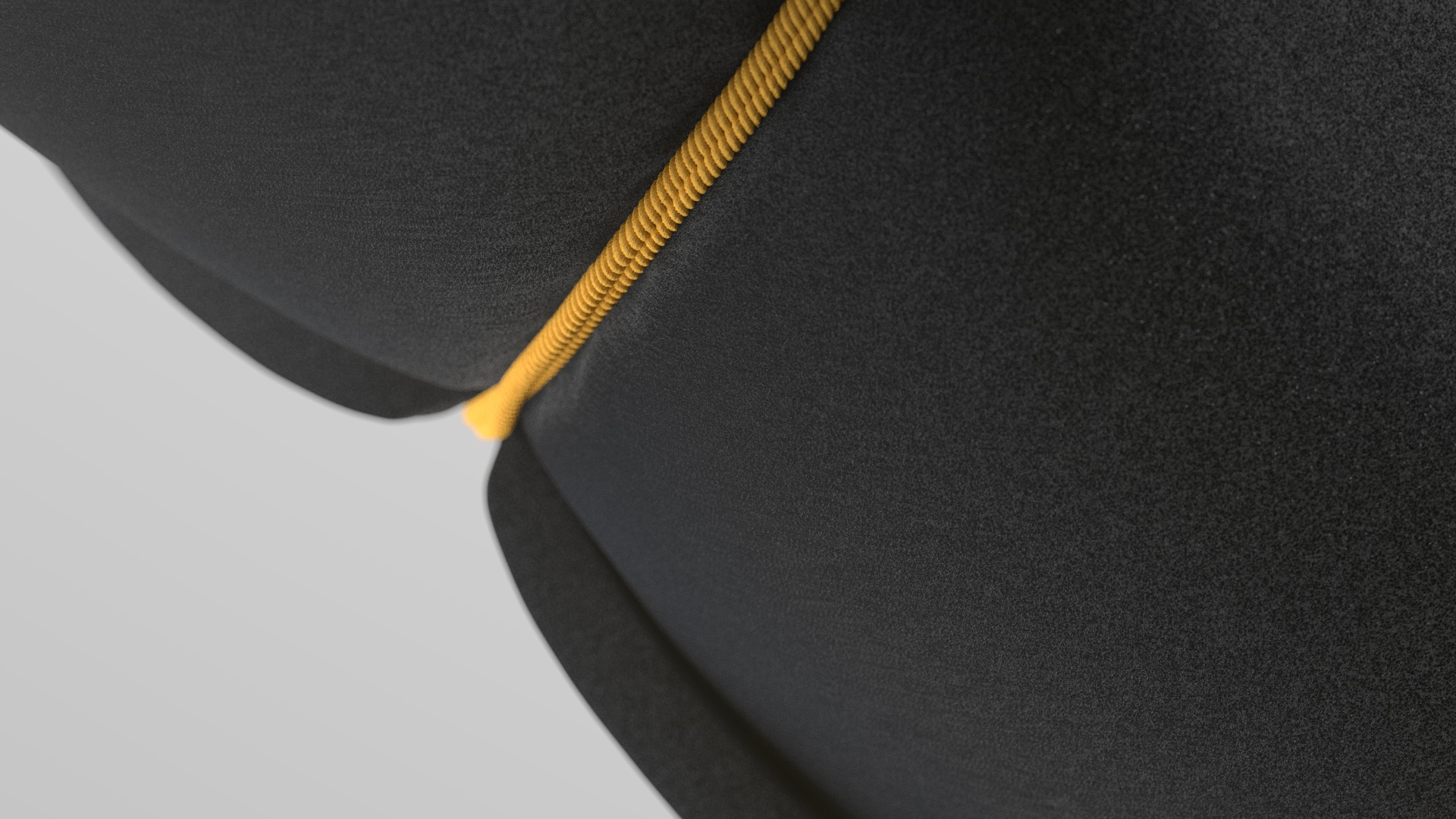
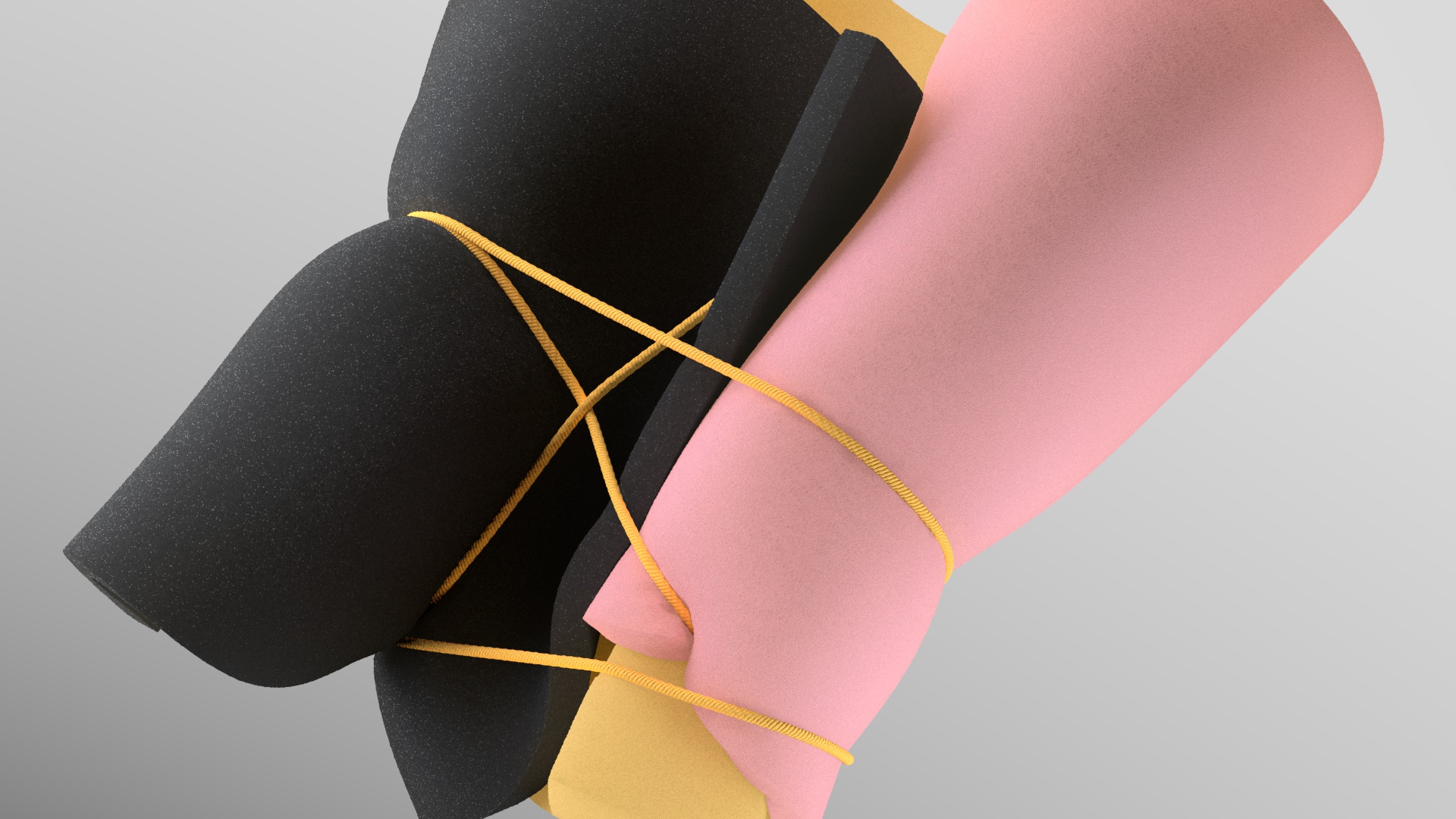
In modern manufacturing, these raw components are mostly derived from petrochemicals, however, there are efforts to find more sustainable alternatives to them.
One of the natural materials that can form rubber is known to humanity for millennia—latex. The substance found in trees called rubber trees contains natural polymers that can be formed into foam.
The resulting material is biodegradable: while it does not solve in water, it can be broken down by bacteria.
Another naturally-occurred component that can be used in soft foam materials is starch.
The resulting material is less durable and is mostly used in packaging, where a shorter lifetime is needed, but there is research into making it more stable.

Application
The features of soft foam materials are conditioned by the porous structure that encapsulates large amounts of air. One of its properties is low thermal conductivity—air in numerous pores hinders the heat flux and prevents it from leaving the material.
This feature is widely used in construction materials that are designed to be flame-retardant and durable as well. Applied in thermal insulation of doors, walls, windows, and roofs, foam materials save energy needed to heat a building.
Another characteristic of foams is softness, due to which such materials are truly widespread and frequently found in everyday items.
Furniture, packaging, mattresses, clothes—in all these applications, foam materials support, adjust, shrink, expand, and protect from impact from the outside.
Highly flexible, they recover their form momentarily and endure twisting, squeezing, and stretching.
Foams can be enhanced with additional properties by the change in the material's composition.
Altering the polymer that serves as a main component of the foam, engineers can produce a material that is resistant to high temperatures, has magnetic or antistatic properties.
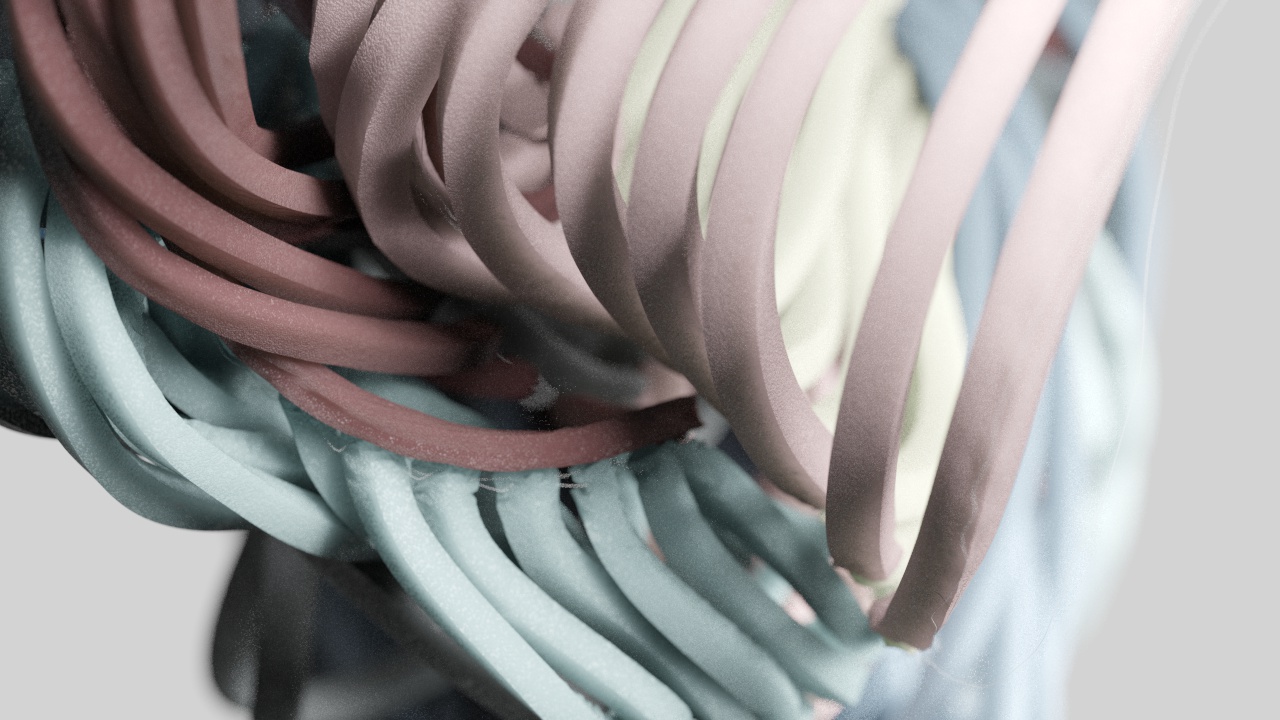


Aesthetics
Cheap and available, foam often becomes material for sculptures and installations. Artists carve out of foam, spill it to achieve a certain shape, fold and tie it up.
With visible imperfections that show the history of the material, creases, and cuts, foam can be blemished and variegated, forming peculiar reliefs.

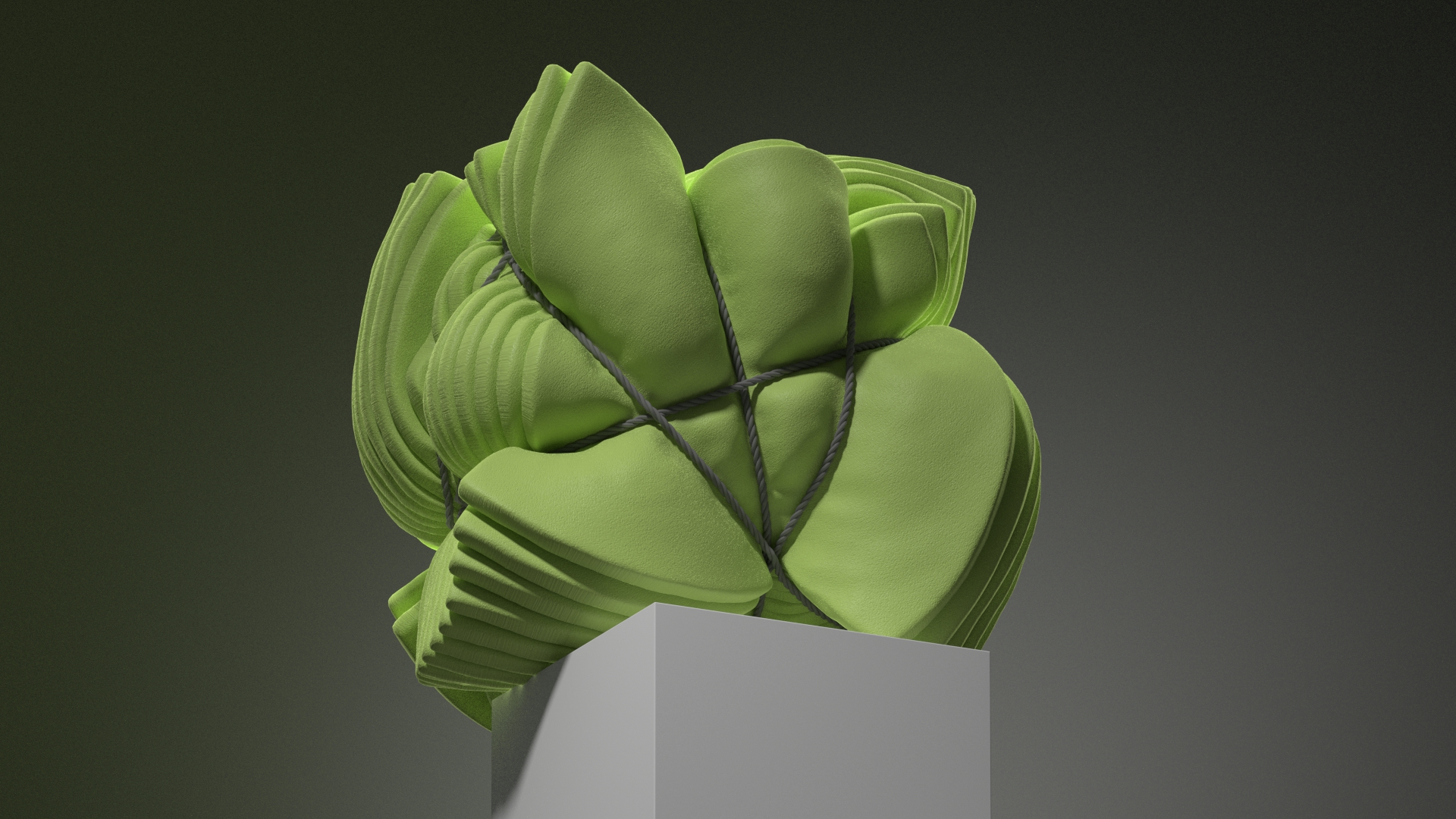
In our exploration, we tried different aesthetic approaches to foam. It can be monumental, with high contrast between light and shadow, or quite small in scale, inspired by product photography.
We also examined different kinds of material, such as heterogenous foam and 'memory' structure that allows the foam to return to a particular shape when exposed to specific conditions.
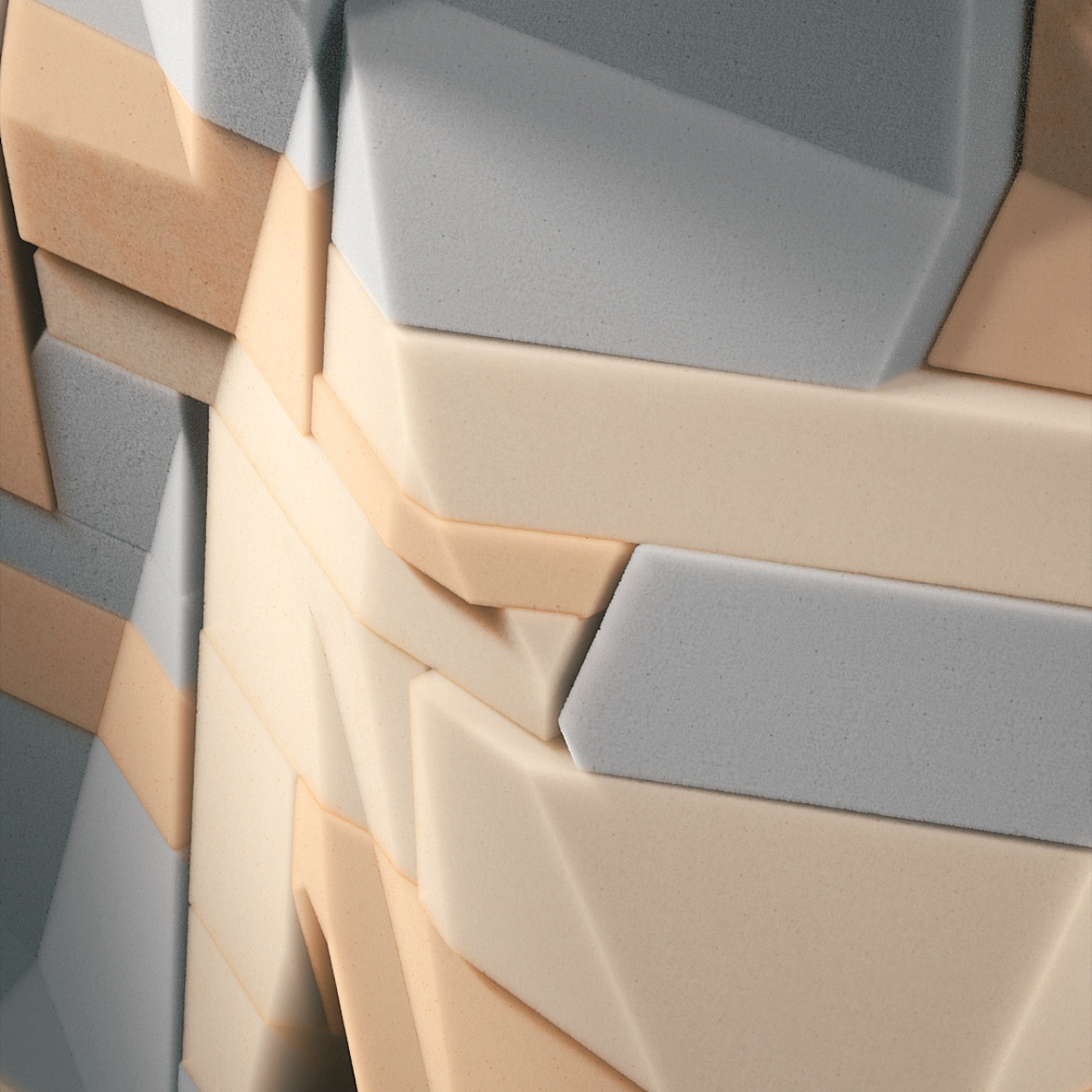
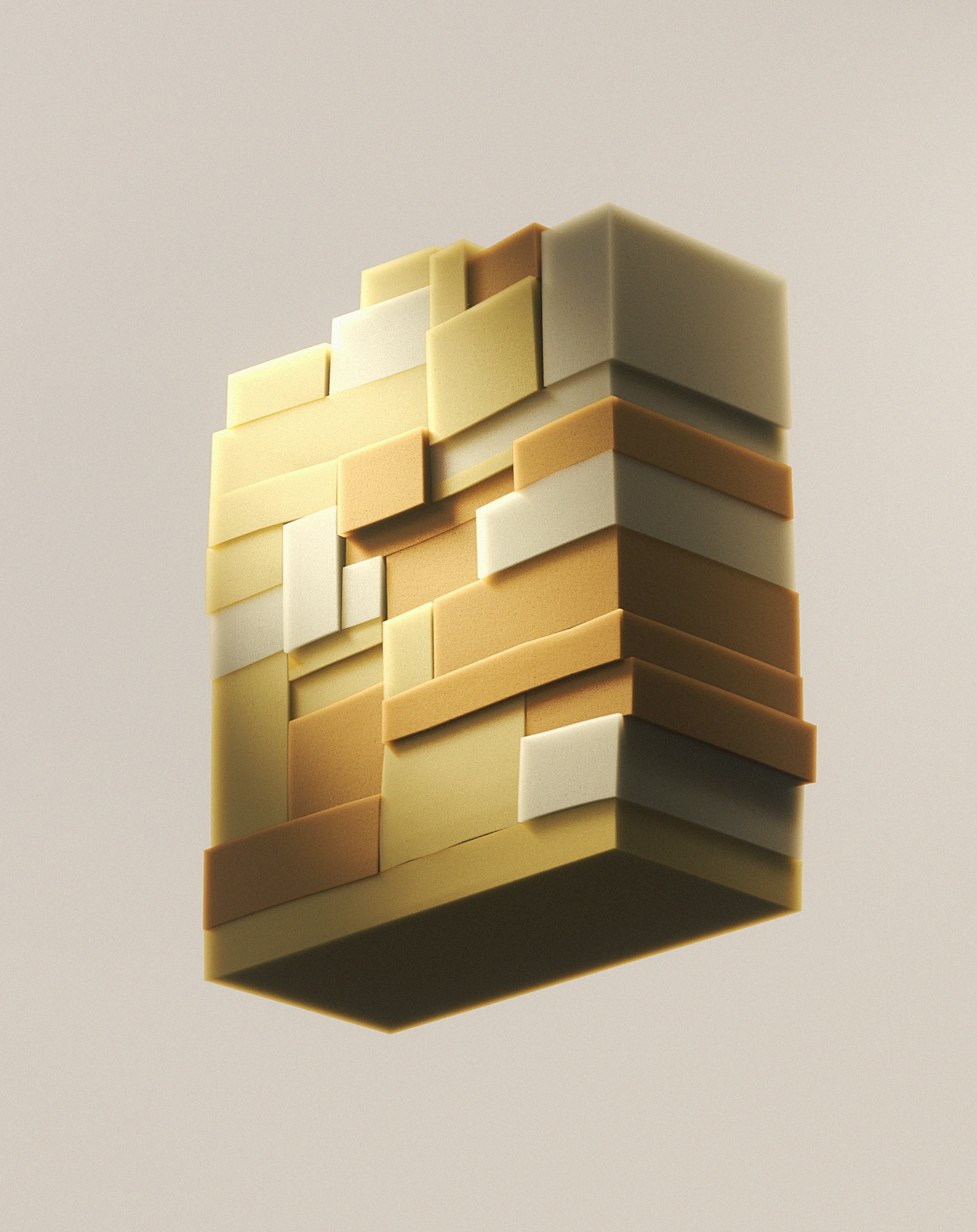
Credits
Creative Direction:
Igor Sordokhonov, Dmitriy Ponomarev
Art Direction:
Anna Reshetnikova
Design, Animation:
Denis Semenov, Tatyana Balyberdina, Sergey Shurupov, Kirill Makhin, Roman Eltsov, Pavel Pitaev, Dmitriy Ponomarev, Daniil Makhin, Roman Kuzminykh, Alexey Schipachev
Sound:
Artyom Markaryan
Edit:
Pavel Pitaev
Graphic Design:
Anastasia Suryaninova
Text:
Anna Gulyaeva
Year:
2021
Contact us >
work@media.work
Follow us >
Instagram
LinkedIn
Spotify
Media.Work > USA
453 S Spring Street
Ste 400 PMB 102, 90013
Los Angeles
Media.Work > UK
71-75 Shelton Street
WC2H 9JQ
London
Media.Work © 2024